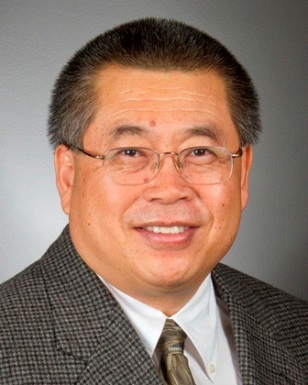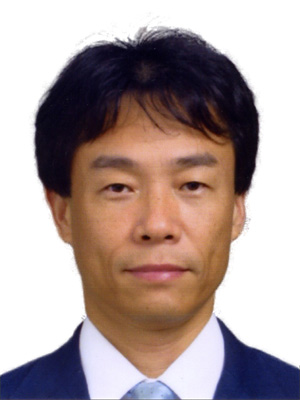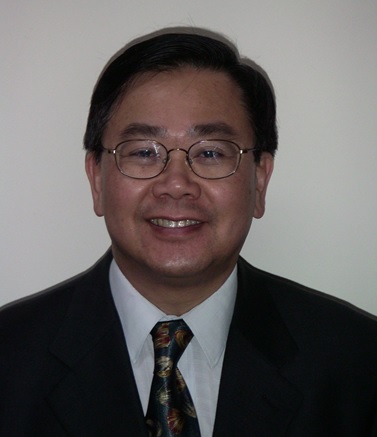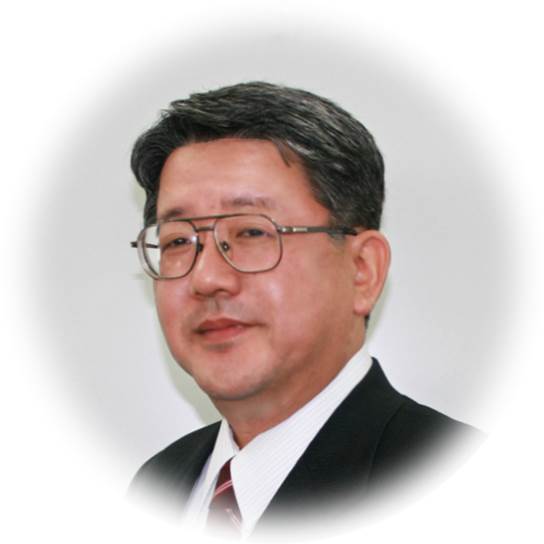![]()
![]()
Keynote & Plenary Speakers
(Speakers listed in name alphabet order)

John M. Cioffi
(NAE Member, UK RAE Member, IEEE Fellow)
Chairman and CEO,
ASSIA Inc, USA
Hitachi Professor Emeritus, Stanford University, USA
Keynote Talk Title:
Software-Defined
Access Networks: Unbundled Competitive Broadband
Time: 8:30-9:30AM,
Tuesday, Feb. 4, 2014
Abstract:
Competition in access
networks for mobile and fixed-line networks has historically defined
separate fixed physical assets (spectra or wired lease), leading to
separate hardware for competitors. Software definition of assets is
evolving to the point where service differentiation can extend to
exploit software alteration of what previously appeared to be fixed
physical assets. This talk will exploit this theme as a creative
mechanism to address real problems in quality of internet experience.
Biography:
John M. Cioffi is Chairman and CEO of ASSIA Inc, a Redwood City, CA based company pioneering DSL management software sold to DSL service providers, specifically known for introducing Dynamic Spectrum Management or DSM. He is also the Hitachi Professor Emeritus at Stanford University, where he held a tenured endowed professorship before retiring after 22 full-time years. Cioffi received his BSEE, 1978, Illinois; PhDEE, 1984, Stanford; Honorary Doctorate, University of Edinburgh 2010; Bell Laboratories, 1978-1984; IBM Research, 1984-1986; EE Prof., Stanford, 1986-2008. Cioffi also founded Amati Com. Corp in 1991 (purchased by TI in 1997 for its DSL technology) and was officer/director from 1991-1997. Cioffi designed the world’s first ADSL and VDSL modems, which design today accounts for roughly 98% of the worlds over 400 million DSL connections.
Cioffi currently also services the Board of Directors of Alto Beam and the Marconi Foundation and has previously served the boards of 8 other public and private companies. Various other awards include IEEE Alexander Graham Bell, Kirchmayer, Kobayashi, and Millenium Medals/Awards (2010, 2014, 2001, 2000), Economist Magazine’s 2010 Innovation Award, International Marconi Fellow (2006); Member, United States National and UK Royal Academies of Engineering (2001, 2009); IEEE Fellow (1996); IEE JJ Tomson Medal (2000); 1999 U. of Illinois Outstanding Alumnus and 2010 Distinguished Alumnus. Cioffi has published several hundred technical papers and is the inventor named on over 100 additional patents, many of which are heavily licensed in the communication industry.

Randy Katz (NAE Member, ACM/IEEE/AAAS
Fellow)
United Microelectronics
Corporation Distinguished Professor,
University of California,
Berkeley,
USA
Keynote Talk Title:
The
Software-Defined Building: A Machine for Living
Time: 8:30-9:30AM,
Wednesday, Feb. 5, 2014
Abstract:
The famous 20th
Century architect Le Corbusier defined a building as "a machine for
living." Many of us have experienced intense frustration and unhappiness
with "the machines" in which we live and work. With the ever increasing
embedding of information technology within the built environment, in the
form of sensors, actuators, displays, cameras, network connectivity, and
programmable controllers all potentially coupled to sophisticated
building management systems, the ability for buildings to become aware
of and respond to the needs and desires of their occupants is finally
emerging. The hoped for result is more comfortable and productive
occupants inside of buildings that are more efficient and sustainable in
their operation. In this talk, we discuss the computer science research
challenges in creating Software-Defined Buildings, an important category
of cyber-physical system, and describe a project underway at Berkeley to
develop new technologies and frameworks to make the vision of such
buildings a reality (http://sdb.cs.berkeley.edu/
Biography:
Katz received his undergraduate degree from Cornell University, and his M.S. and Ph.D. degrees from the University of California, Berkeley. He joined the Berkeley faculty in 1983, where since 1996 he has been the United Microelectronics Corporation Distinguished Professor. He is a Fellow of the ACM and the IEEE, and a member of the National Academy of Engineering and the American Academy of Arts and Sciences. In 2007, he received an honorary doctorate from the University of Helsinki. He has published over 300 refereed technical papers, book chapters, and books. He has supervised 51 M.S. theses and 39 Ph.D. dissertations. His recognitions include thirteen best paper awards, three best presentation awards, the Outstanding Alumni Award of the Berkeley Computer Science Division, the CRA Outstanding Service Award, the Berkeley Distinguished Teaching Award, the CS Division's Diane S. McEntyre Award for Excellence in Teaching, the Air Force Exceptional Civilian Service Decoration, the IEEE Reynolds Johnson Information Storage Award, the ASEE Frederic E. Terman Award, the IEEE James H. Mulligan Jr. Education Medal, the ACM Karl V. Karlstrom Outstanding Educator Award, and the ACM Sigmobile Outstanding Contributor Award. In the late 1980s, with colleagues at Berkeley, he developed Redundant Arrays of Inexpensive Disks (RAID), a $15 billion per year industry sector. While on leave for government service in 1993-1994, he established whitehouse.gov and connected the White House to the Internet.

Guoliang Xue (IEEE Fellow/IEEE
Distinguished Lecturer)
Professor, Arizona State University, USA
Keynote Talk Title:
Emerging Opportunities and Challenges with Smartphones:
Crowdsourcing and User Authentication
Time: 8:30-9:30AM,
Thursday, Feb. 6, 2014
Abstract:
More and more people are adapting to smartphones, which
are lightweight and can provide extensive communication, computation,
and sensing capabilities. These features make smartphones ideal for
crowdsourcing, which is a new computing paradigm for human centric
computing with collective intelligence. There are two challenges in
crowdsourcing to smartphones. The first challenge is the need for an
appropriate incentive mechanism, which can provide incentives for
smartphone users to participate in crowdsourcing. The second challenge
is the related security and privacy issues. To address the first
challenge, we design incentive mechanisms for mobile phone sensing. We
consider two system models: the platform-centric model where the
platform provides a reward shared by participating users, and the
user-centric model where users have more control over the payment they
will receive. For the platform-centric model, we design an incentive
mechanism using a Stackelberg game, where the platform is the leader
while the users are the followers. We show how to compute the unique
Stackelberg Equilibrium, at which the utility of the platform is
maximized. For the user-centric model, we design an auction-based
incentive mechanism, which is computationally efficient, individually
rational, profitable, and truthful. To address the second challenge, we
design a biometric based un-observable re-authentication scheme for
smartphones. Our scheme uses the sensors within the smartphones to
capture the gestures of finger movement of the user of the smart phone.
These gestures are used to decide whether the current user of the
smartphone is the owner of the smart phone or not. Besides discussing
what we know, this talk will also address many important open research
issues in this area.
Biography:
Guoliang (Larry) Xue is a Professor of Computer Science and Engineering at Arizona State University. He earned a PhD degree in Computer Science from the University of Minnesota in 1991. His research interests include survivability and security issues in networking, quality of service provisioning, and human centric computing with collective intelligence. He has published over 200 refereed papers in these areas, including over 100 journal papers. He serves on the editorial boards of IEEE/ACM Transactions on Networking and IEEE Network Magazine. He served as a TPC co-chair of IEEE INFOCOM’2010 and is a member of the INFOCOM Standing Committee. He was Keynote Speaker at IEEE LCN’2011. He is a recipient of the Best Paper Runner-up at IEEE ICNP’2010. He was an IEEE Communications Society Distinguished Lecturer from January 2010 to December 2011. He is an IEEE Fellow.

Nei Kato (IEEE/IEICE Fellow, IEEE
Distinguished Lecturer)
Professor, Tohoku University, Japan
Plenary Talk Title:
Disaster Resilient Network Technologies: MDRU and Relay-by-Smartphone
Time: 14:30-15:30,
Wednesday, Feb. 5, 2014
Abstract:
With the increase of natural disasters like earthquakes, tsunamis, tornados, and so forth, it is easy to imagine a situation in which people lose their communication infrastructure whereas their communication needs, after a disaster happens, are typically high. To address this issue, Japanese government launched several projects to facilitate disaster resilient technologies, and one of them is the “Movable and Deployable Resource Units (MDRUs)”, a joint project in which Tohoku University, NTT, NTT Communications, Fujitsu and several other companies in Japan have been collaborating. The MDRU, equipped with circuit switching and Wi-Fi systems, which allow users to use the system easily, can be promptly transported by truck or helicopter to disaster-affected areas. In the fiscal year of 2012, we have successfully implemented the system and conducted the field test in Sendai and Fukushima, two cities in north-east Japan that experienced heavy damage of ICT infrastructure during the devastating earthquake and tsunami in 2011. Meanwhile, we have also developed a technology called “Relay-by-Smartphone” which allows users to transmit their messages by Wi-Fi based ad hoc networks. This system can expand the coverage area of the MDRU. In this talk, the introduction of the MDRU and “Relay-by-Smartphone” technology will be delivered along with the prospect of future disaster resilient networks.
Biography:
Nei Kato(A’03–M’04–SM’05-F’13) received his Bachelor Degree from Polytechnic University, Japan in 1986, M.S. and Ph.D. Degrees in information engineering from Tohoku University, Japan, in 1988 and 1991, respectively. He joined Computer Center of Tohoku University at 1991, and has been a full professor with the Graduate School of Information Sciences since 2003. He became Special Assistant to the President of Tohoku University since 2013. He has been engaged in research on satellite communications, computer networking, wireless mobile communications, smart grid, image processing, and pattern recognition. He has published more than 300 papers in peer-reviewed journals and conference proceedings. He currently serves as the Vice Chair of IEEE Ad Hoc & Sensor Networks Technical Committee, the Chair of IEEE ComSoc Sendai Chapter, the steering committee member of WCNC and a voting member of GITC, an editor of IEEE Wireless Communications(2006-), IEEE Wireless Communications(2006-), IEEE Network Magazine(2012-), IEEE Transactions on Wireless Communications(2008-), IEEE Transactions on Vehicular Technology(2010-), and IEEE Trans. on Parallel and Distributed Systems(TPDS). From 2013, he also serves as an Associate Editor-in-Chief of TPDS. He has served as the Chair of IEEE Satellite and Space Communications Technical Committee(2010-2012), the Chair of IEICE Satellite Communications Technical Committee(2011-2012), guest-editor of many IEEE transactions/journals/magazines, a symposium co-chair of GLOBECOM’07, ICC’10, ICC’11, ICC’12, Vice Chair of IEEE WCNC’10, WCNC’11, ChinaCom’08, ChinaCom’09, Symposia co-chair of GLOBECOM’12, ICC’14, and workshop co-chair of VTC2010. His awards include Minoru Ishida Foundation Research Encouragement Prize(2003), Distinguished Contributions to Satellite Communications Award from the IEEE Communications Society, Satellite and Space Communications Technical Committee(2005), the FUNAI information Science Award(2007), the TELCOM System Technology Award from Foundation for Electrical Communications Diffusion(2008), the IEICE Network System Research Award(2009), the IEICE Satellite Communications Research Award(2011), the KDDI Foundation Excellent Research Award(2012), IEICE Communications Society Distinguished Service Award(2012), IEEE GLOBECOM/WCNC/VTC Best Paper Awards, and IEICE Communications Society Best Paper Award(2012). Besides his academic activities, he also serves on the expert committee of Telecommunications Council, Ministry of Internal Affairs and Communications, and as the chairperson of ITU-R SG4 and SG7, Japan. Nei Kato is a Distinguished Lecturer of IEEE Communications Society(2012-2014) and the co-PI of A3 Foresight Program(2011-2014) funded by Japan Society for the Promotion of Sciences(JSPS), NSFC of China, and NRF of Korea. He is a fellow of IEEE and IEICE

Victor C. M. Leung (IEEE/CAE Fellow, IEEE Distinguished Lecturer)
Professor and TELUS Mobility Research Chair, UBC, Canada
Plenary Talk Title: Video Game as a Service − Cloud Computing Enabled
Mobile Video Gaming (Talk Slides)
Time:
13:30-14:30, Tuesday, Feb. 4, 2014
Abstract:
Mobile computing and cloud computing are complementary as the scalable and ubiquitous computing resources in the cloud can compensate for the limitations in processing and storage capacities of mobile devices and greatly enhance the applications and services that are available to mobile users. We give an overview of the general characteristics of mobile cloud computing and related research issues. Taking advantage of mobile cloud computing, mobile cloud-based video gaming (MCVG) is an emerging trend that is moving the online entertainment industry into the cloud era. In MCVG, the game engines are hosted in the cloud, and the rendered gaming videos are transmitted over wireless networks to the mobile devices. In reverse, game players’ interactions on screens are sent to the cloud server over the same networks. How to compress and transmit the real-time gaming video, so that during the gaming session, the expected server transmission rate over the bandwidth-limited wireless network is minimized while satisfying the quality of experience demanded by the players, is a great technical challenge that we shall address in this presentation in a multi-player gaming context. We propose a MCVG system with cooperative video sharing, which exploits the correlations between the gaming videos for distinct players in the same gaming scene to enable the cloud game server to efficiently encode and transmit multiple video streams to a group of players, while those players are able to decode their video in a cooperative manner by content sharing via a secondary ad hoc wireless network. Experimental results show that the expected server transmission rate can be significantly reduced compared to the conventional video encoding schemes for cloud games. We conclude with a discussion on our ongoing research to develop a cognitive framework that will provide “video game as a service” to players using a variety of mobile devices to access computer games in the cloud over different wireless and wireline networks with diverse quality of service characteristics.
Biography:
Victor C. M. Leung [S’75, M’89, SM’97, F’03] received the B.A.Sc. (Hons.) degree in electrical engineering from the University of British Columbia (UBC) in 1977, and was awarded the APEBC Gold Medal as the head of the graduating class in the Faculty of Applied Science. He attended graduate school at UBC on a Natural Sciences and Engineering Research Council Postgraduate Scholarship and completed the Ph.D. degree in electrical engineering in 1981.
From 1981 to 1987, Dr. Leung was a Senior Member of Technical Staff and satellite system specialist at MPR Teltech Ltd., Canada. In 1988, he was a Lecturer in the Department of Electronics at the Chinese University of Hong Kong. He returned to UBC as a faculty member in 1989, and currently holds the positions of Professor and TELUS Mobility Research Chair in Advanced Telecommunications Engineering in the Department of Electrical and Computer Engineering. Dr. Leung has co-authored more than 600 technical papers in international journals and conference proceedings, 25 book chapters, and co-edited 5 book titles. Several of his papers had been selected for best paper awards. His research interests are in the areas wireless networks and mobile systems.
Dr. Leung is a registered professional engineer in the Province of British Columbia, Canada. He is a Fellow of IEEE, the Engineering Institute of Canada, and the Canadian Academy of Engineering. He was a Distinguished Lecturer of the IEEE Communications Society. He is a member of the editorial boards of the IEEE Transactions on Computers, IEEE Wireless Communications Letters, Computer Communications, and several other journals, and has previously served on the editorial boards of the IEEE Journal on Selected Areas in Communications – Wireless Communications Series, the IEEE Transactions on Wireless Communications, the IEEE Transactions on Vehicular Technology, and the Journal of Communications and Networks,. He has guest-edited many journal special issues, and contributed to the organizing committees and technical program committees of numerous conferences and workshops. He received the IEEE Vancouver Section Centennial Award and 2012 UBC Killam Research Prize.

